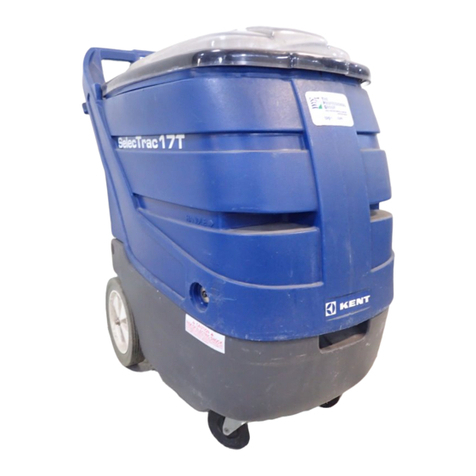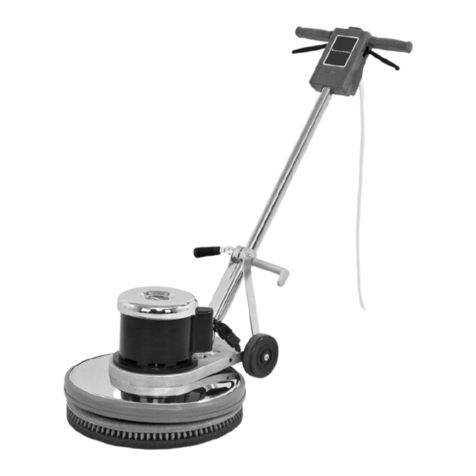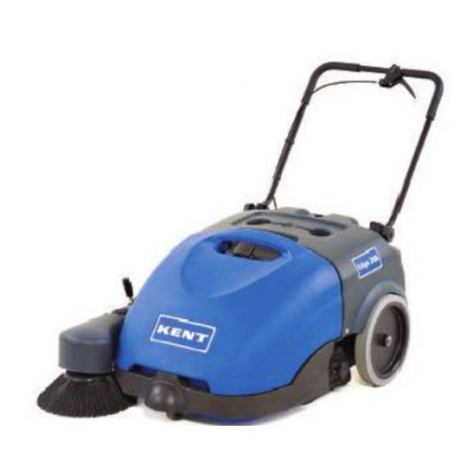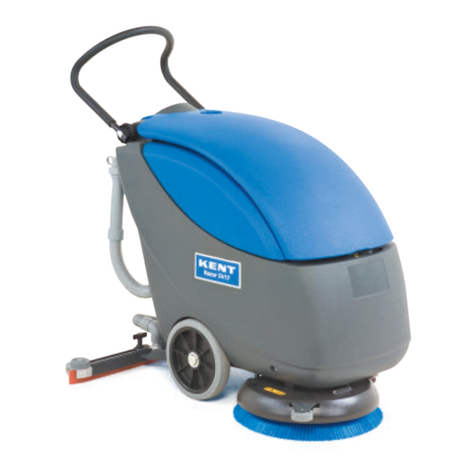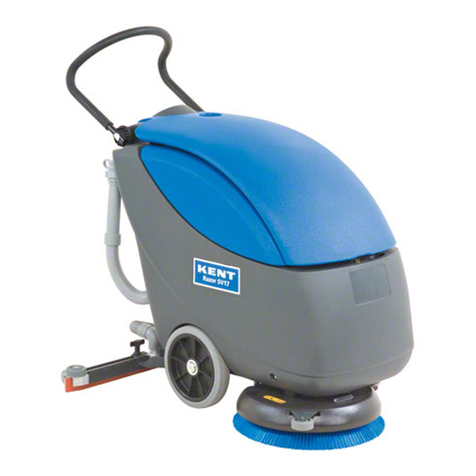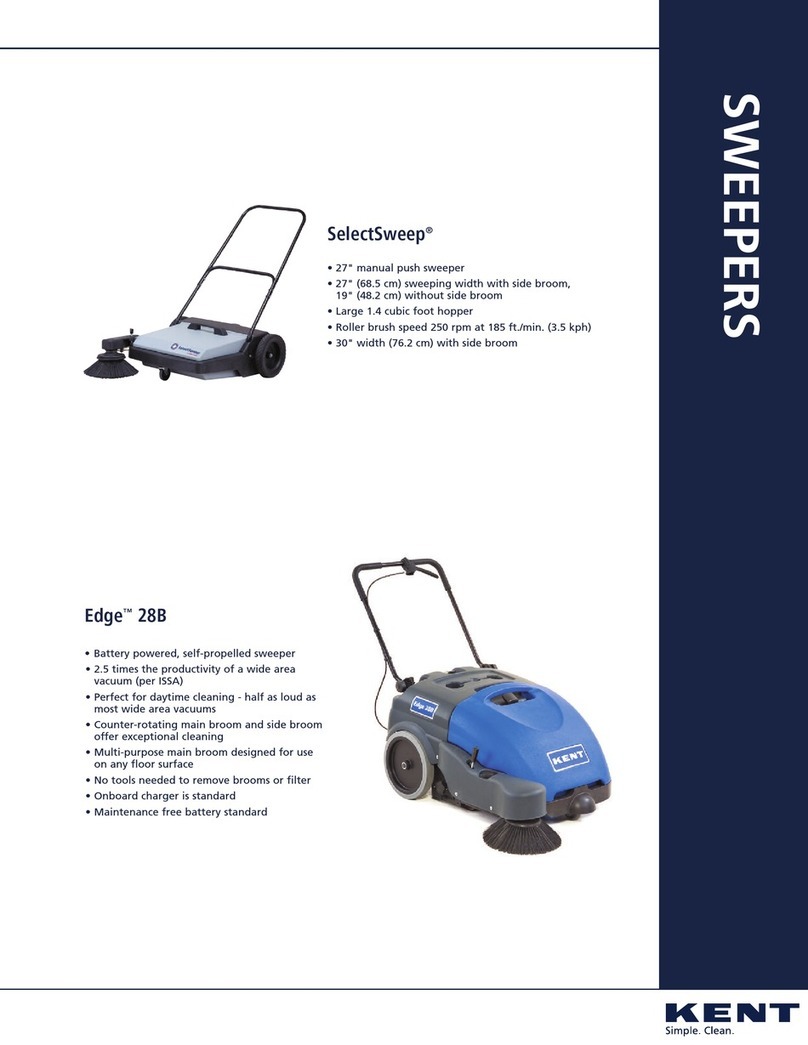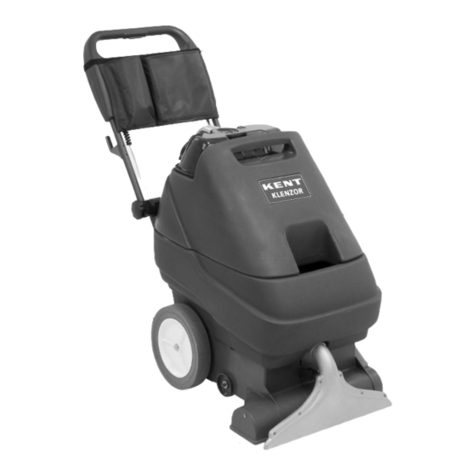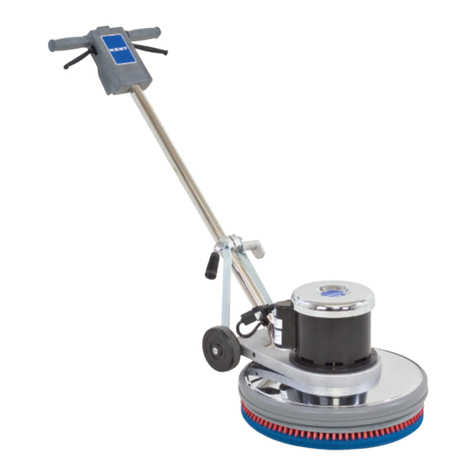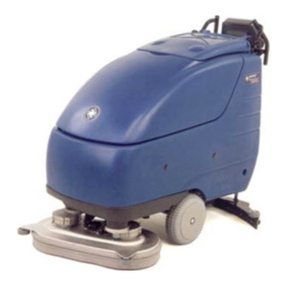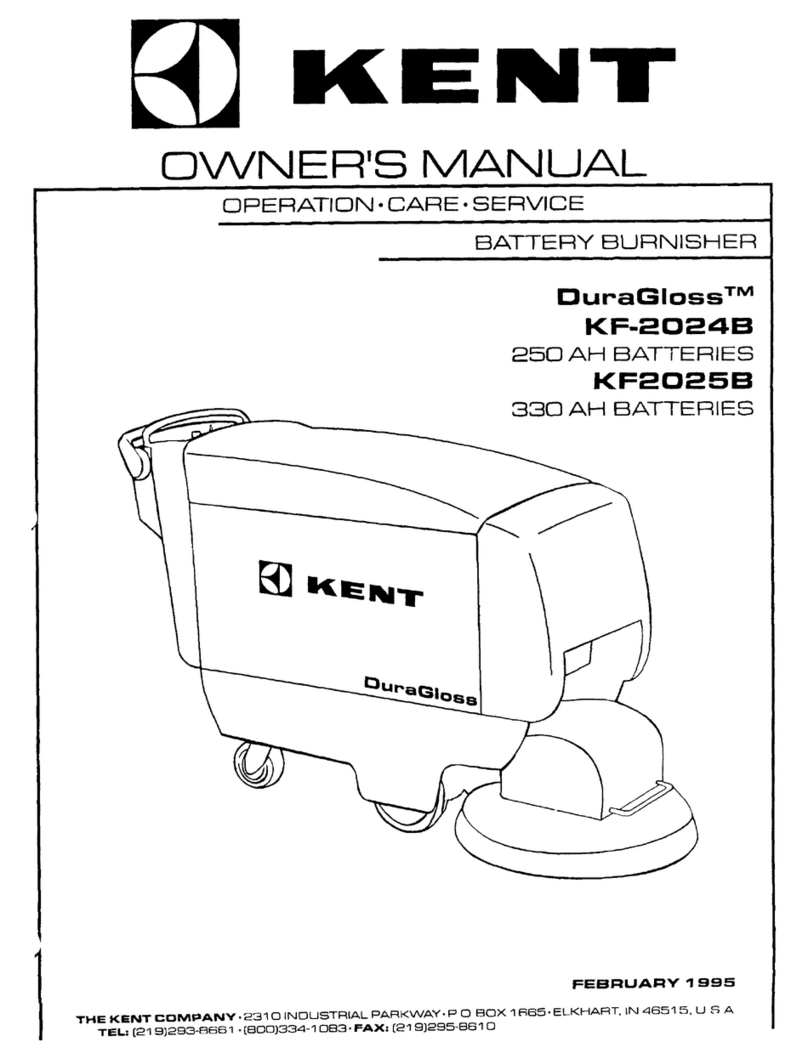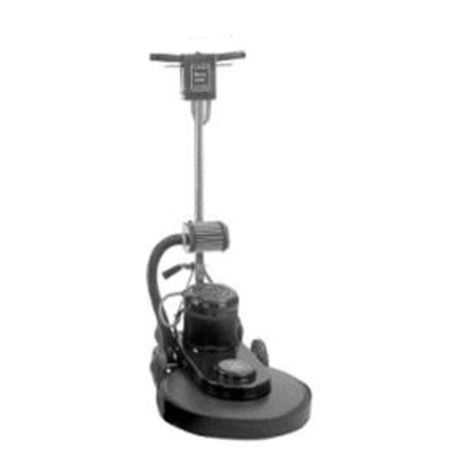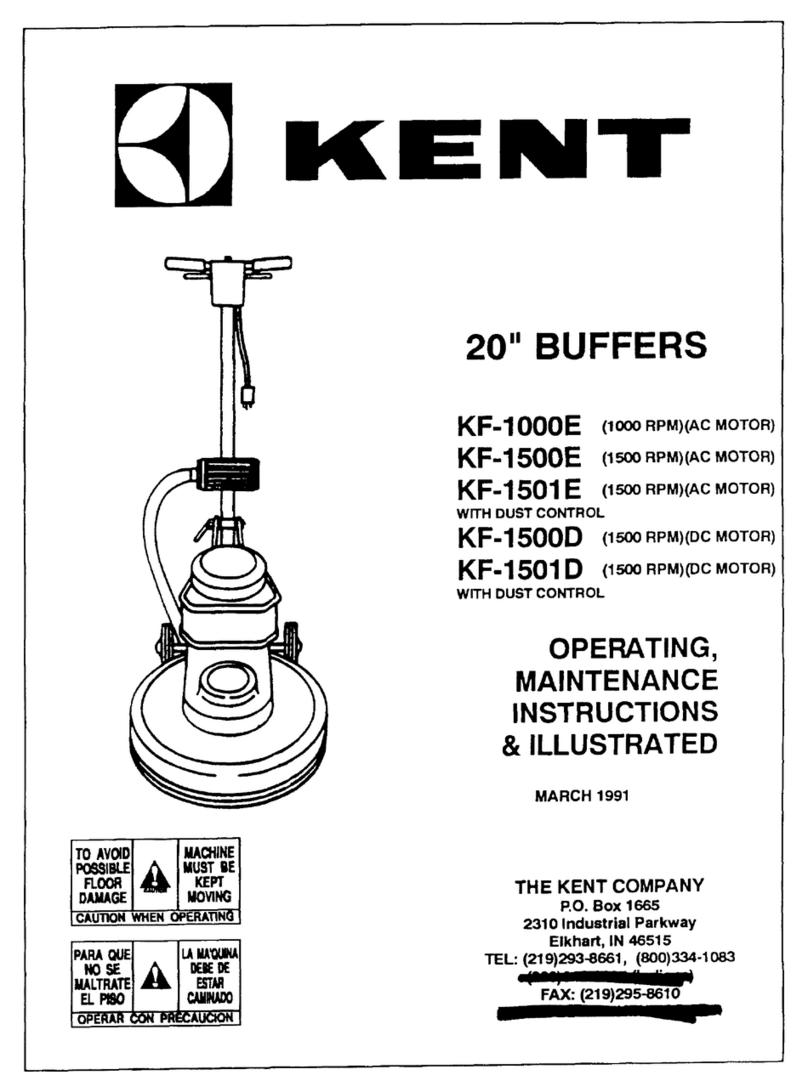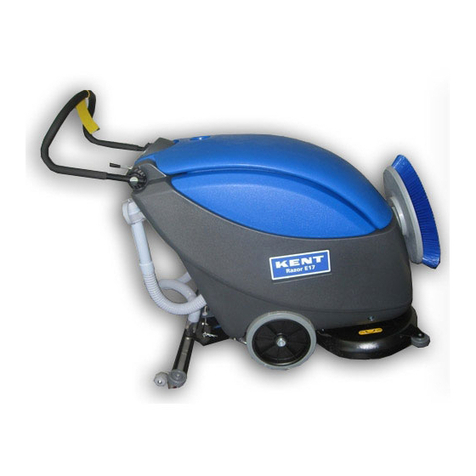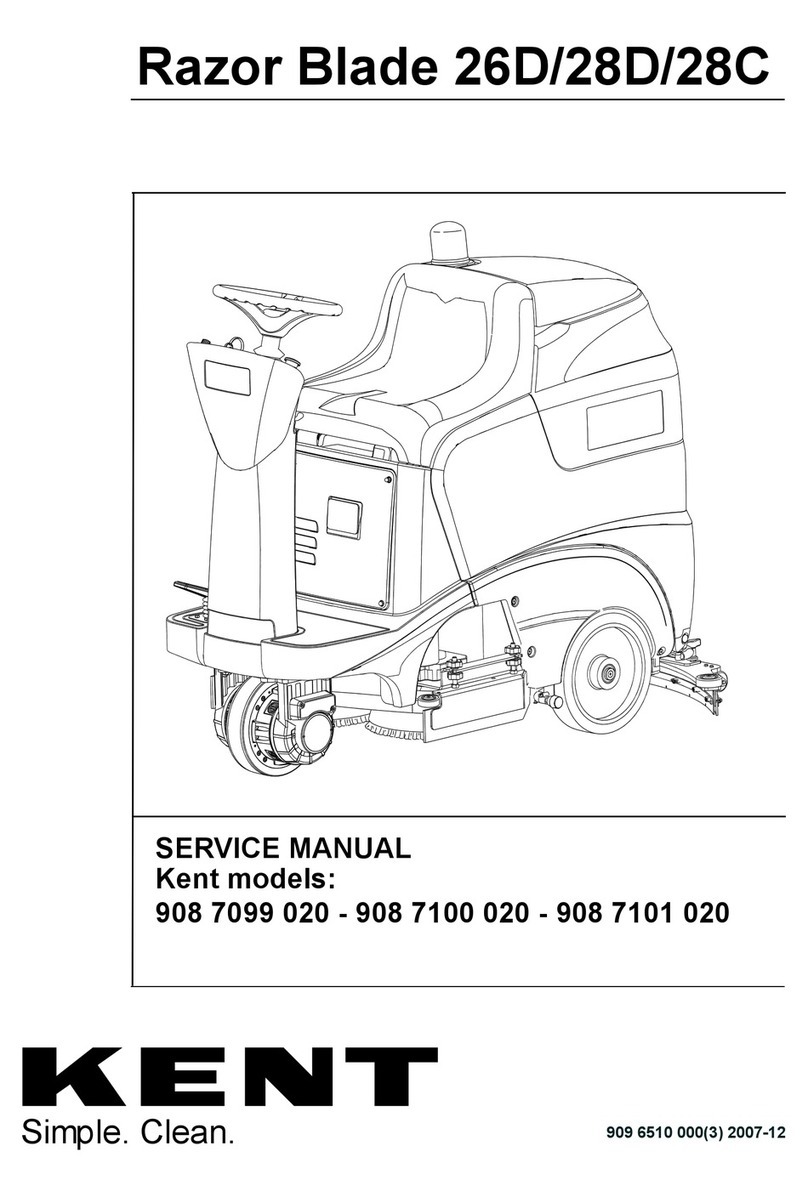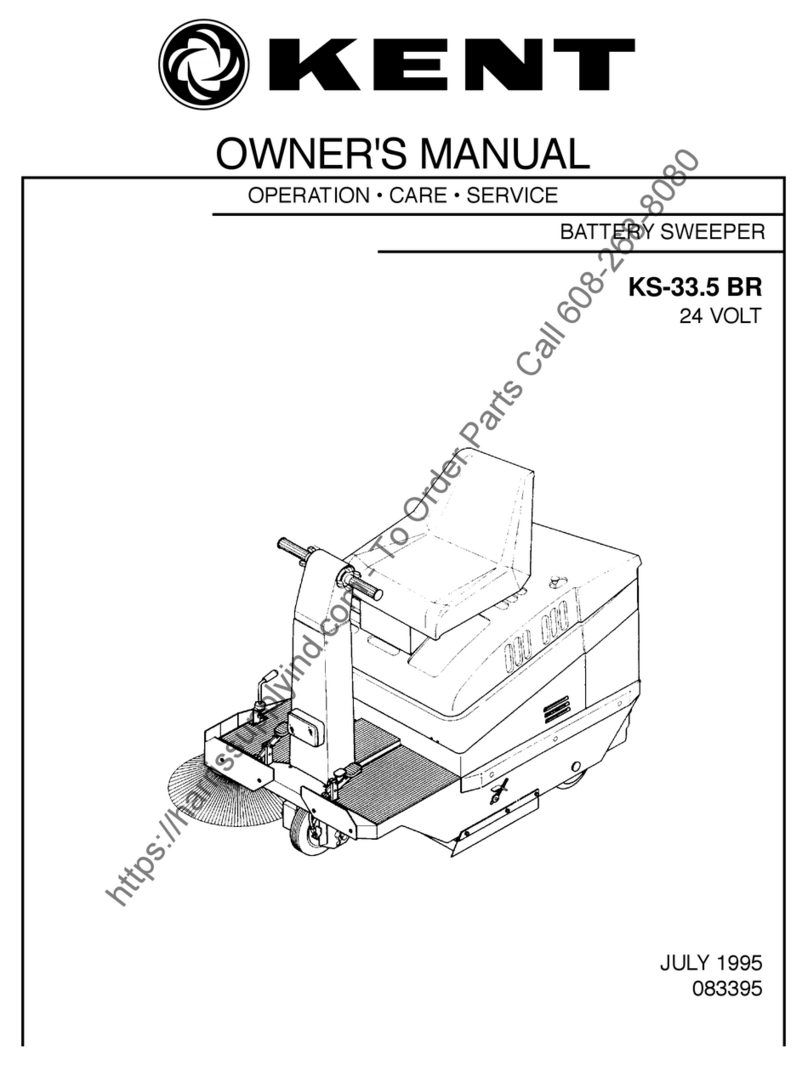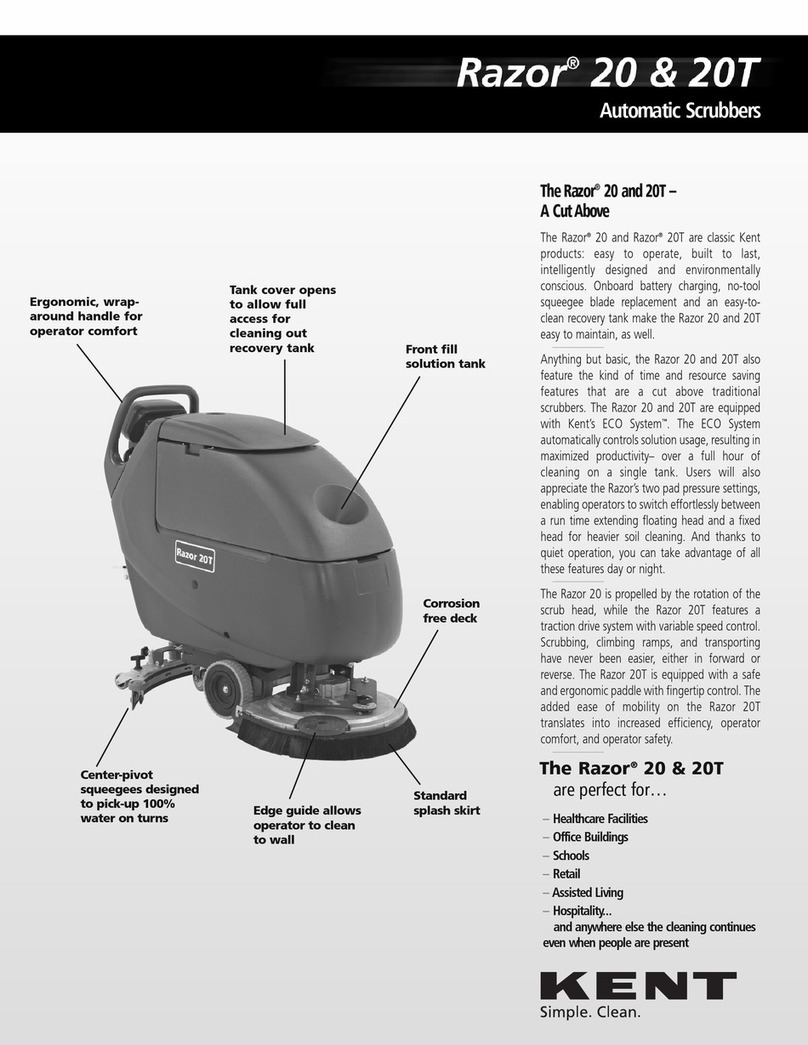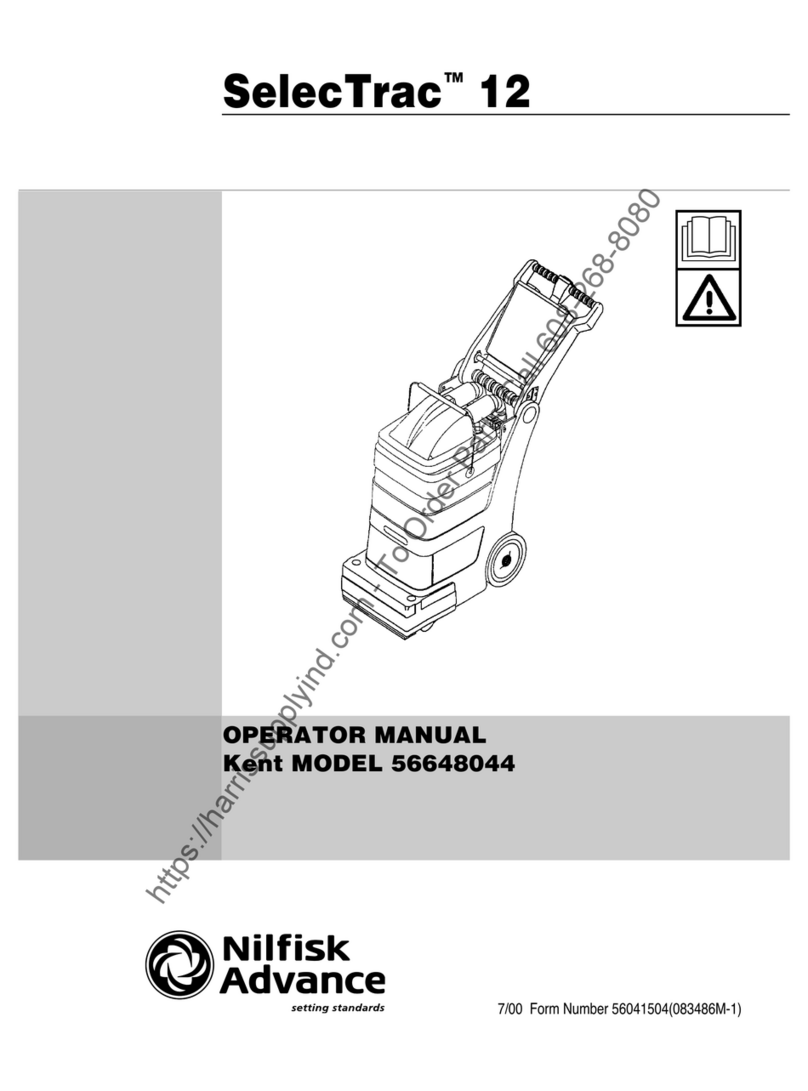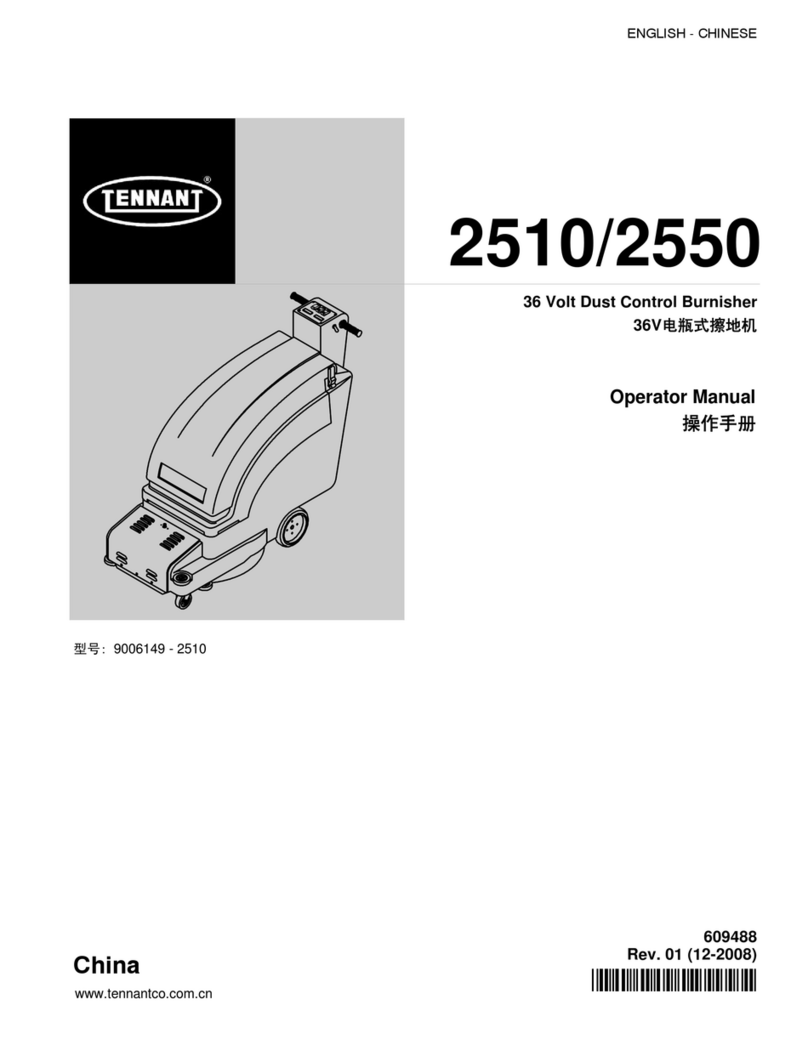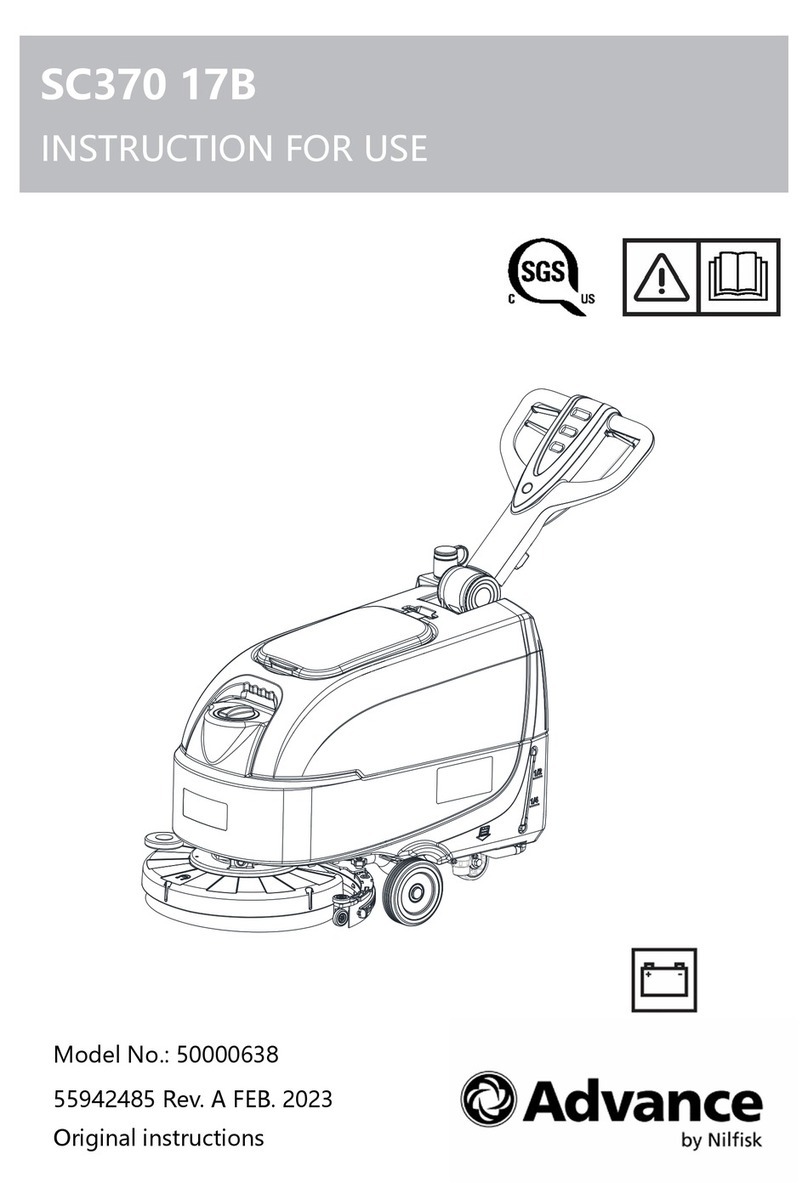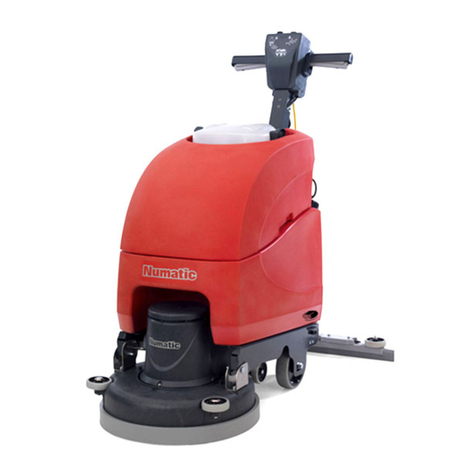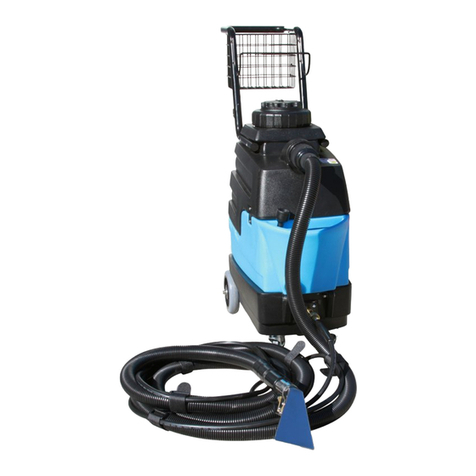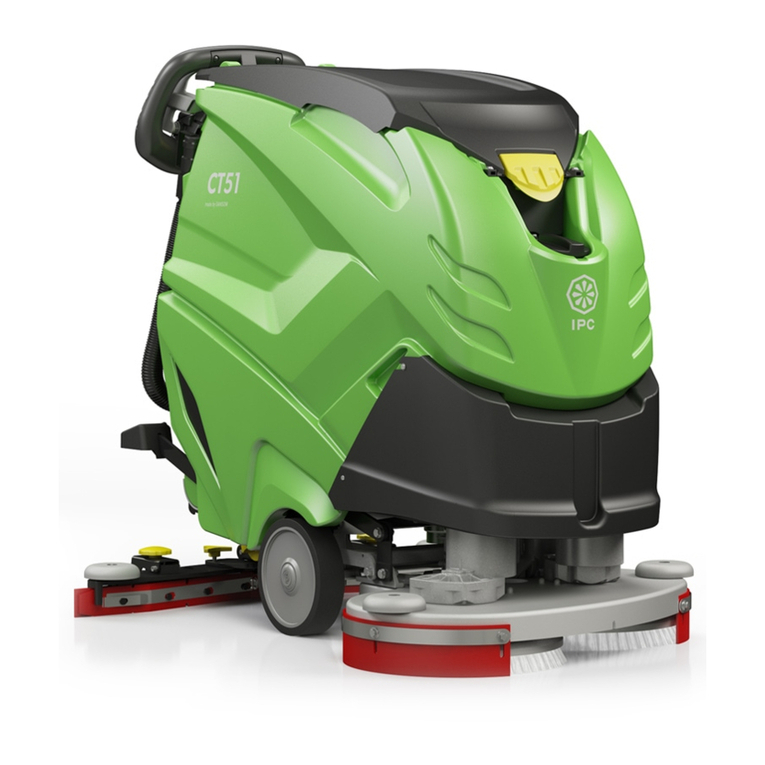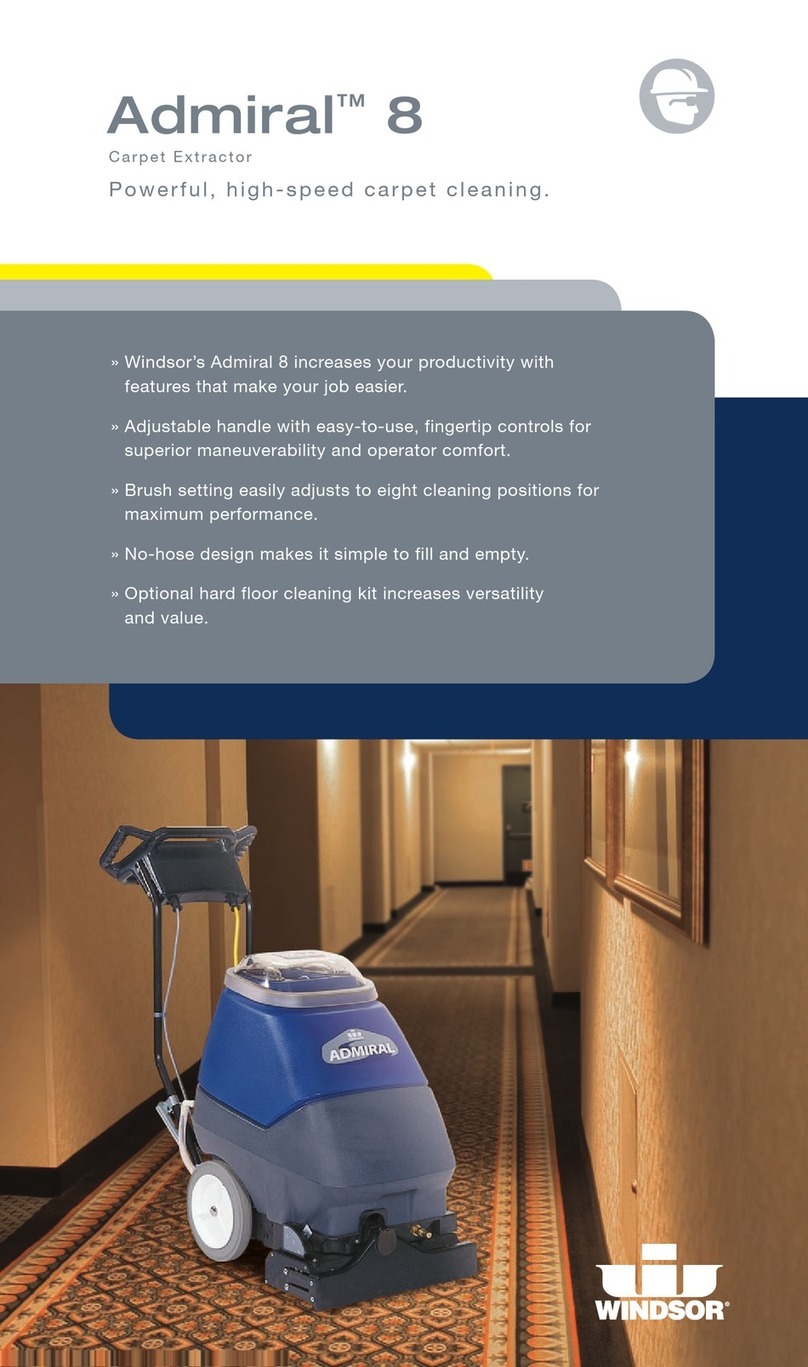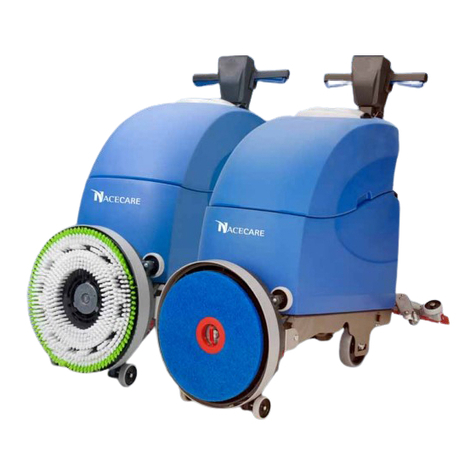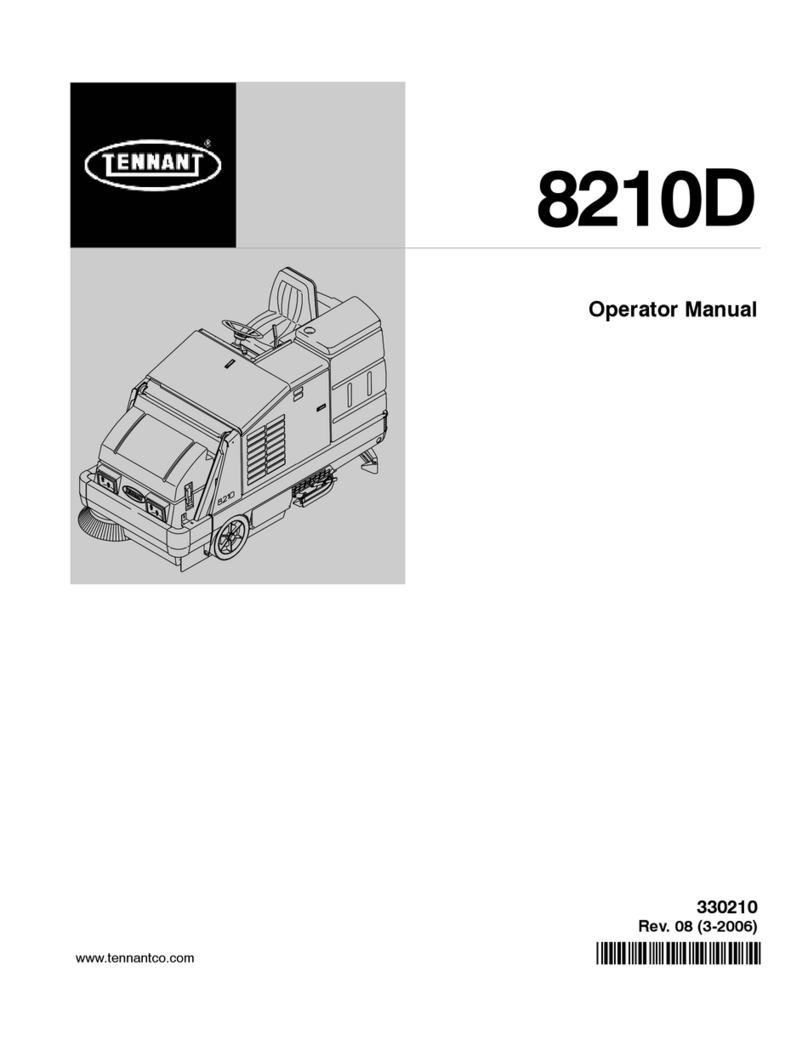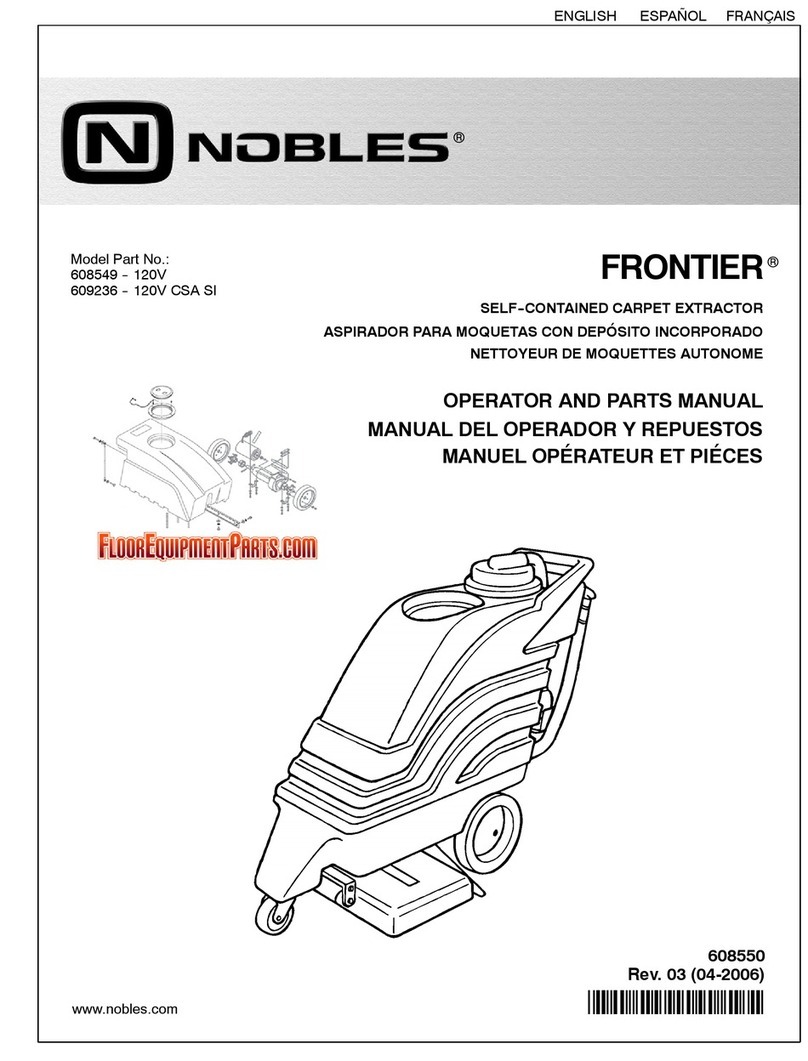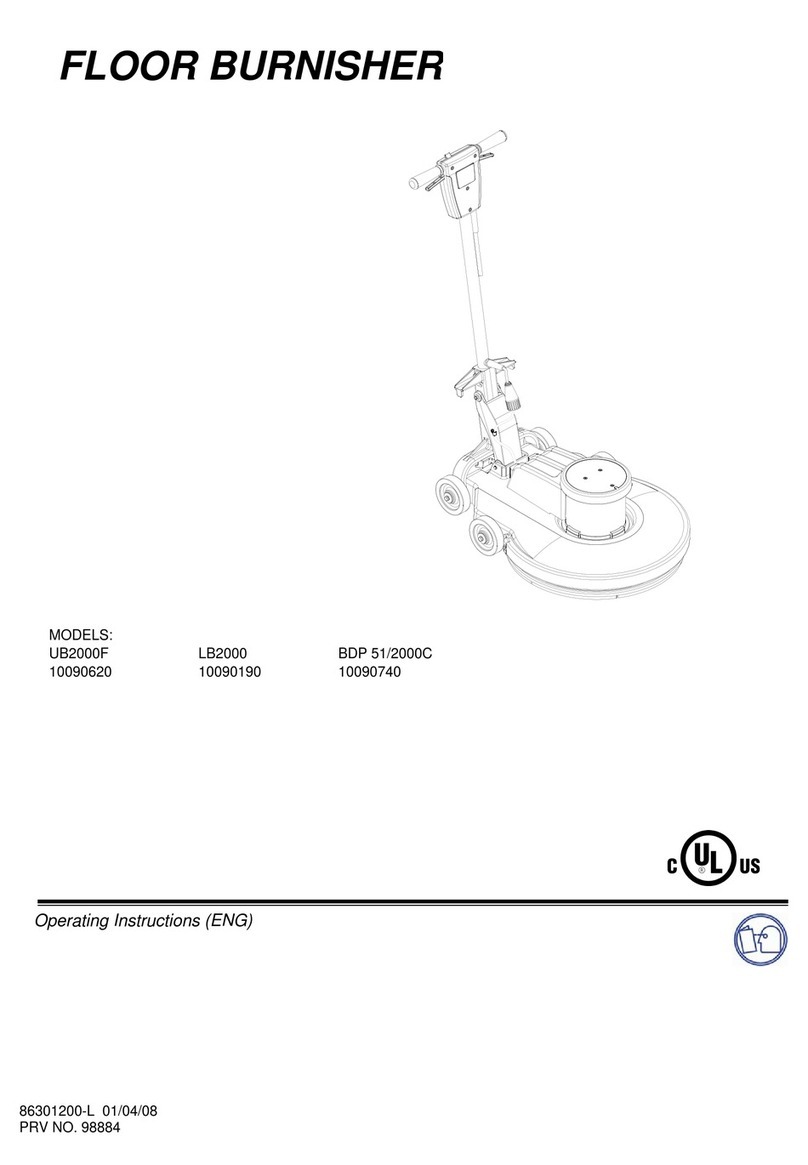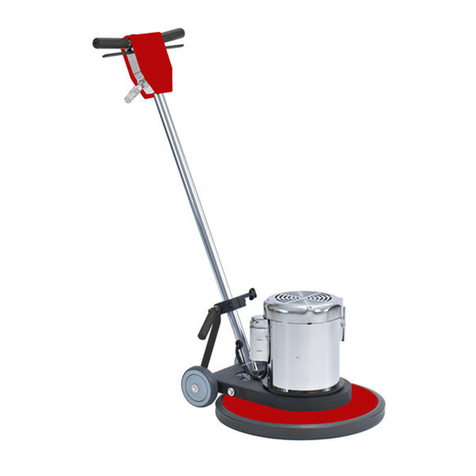INSTRUCTIONS FOR USE
Razor™ Plus 24D-26D-28D / Razor™ Plus 24C-28C — 909 5428 000(2)2005-01 3
– Carefully read alltheinstructionsbeforecarryingoutany
maintenance/repair operations.
– Before using the battery charger, ensure that frequency
and voltage values, indicated on the machine serial
number plate, match the mains voltage.
– Take all necessary precautions to prevent hair, jewelry
and loose clothes from being caught in the moving parts.
– Do not smoke while charging the batteries.
– Donotleave the machine unattended without beingsure
that the machine cannot move independently.
– Do not wash the machine with direct or pressurized
water jets, or with corrosive substances.
– Do not use the machine in particularly dusty areas.
– While using this machine, take care not to cause
damage to other people, especially children.
– Do not put any can containing fluids on the machine.
– The storage temperature must be between +32°F and
+104°F (0°C and +40°C).
– The machine operating temperature must be between
+32°F and +104°F (0°C and +40°C).
– The humidity must be between 30% and 95%.
– Always protect the machine against the sun, rain and
bad weather, both under operation and inactivity
condition.
– Do not use the machine as a means of transport.
– Do not use the machine on slopes with an inclination
higher than 2%.
– Do not allow the brushes to operate while the machine is
stationary to avoid damaging the floor.
– In case of fire, possibly use a powder fire extinguisher,
not a water one.
– Do not bump into shelves or scaffoldings, particularly
where there is a risk of falling objects.
– Donot tamperwith themachinesafetyguards andfollow
the ordinary maintenance instructions scrupulously.
– Do not remove or modify the plates affixed to the
machine.
– In case of machine malfunctions, ensure that these are
not due to lack of maintenance. Otherwise, request
assistance from the authorized personnel or from an
authorized Service Center.
– Ifparts mustbe replaced, require ORIGINALspareparts
from a Dealer or Authorized Retailer.
– To ensure the proper and safe operation of the machine,
have the scheduled maintenance, detailed in the related
chapter of this manual, performed by the authorized
personnel or an authorized Service Center.
– The machine must be disposed of properly, because of
the presence of toxic-harmful materials (batteries, etc.),
which are subject to standards that require disposal in
special centres (see the Scrapping chapter).
– If the machine is used according to the instructions, the
vibrations do not cause dangerous situations. The
machine vibration level is less than 2.5 m/s2.
– Do not leave any object penetrate in the openings. Do
not use the machine in case the openings are clogged;
always keep the openings free from dust, hairs and any
other foreign material which could reduce the air flow.
– This machine cannot be used on public roads.
– Pay attention during the machine transfers when
temperature is below freezing point. The water in the
recovery tank or in the hoses could freeze and seriously
damage the machine.
– Use only brushes and the pad-holders supplied with the
machine and those specified in the Instructions for Use
manuals. Using other brushes or pad-holders could
reduce safety.
UNPACKING
When the machine is delivered, check that the packing and
themachine were not damagedduringtransportation.Incase
of visible damages, keep the packing and have it checked by
the Carrier that delivered it. Call the Carrier immediately to fill
in a damage claim.
Pleasecheckthatthefollowingitemshavebeen suppliedwith
the machine:
1. Technical documents:
– Automatic Scrubber Instructions for Use Manual
– Electronic Battery Charger Manual
– Automatic Scrubber Spare Parts List
2. No. 2 lamellar fuses
3. No. 5 6V battery housing shims
MACHINE DESCRIPTION
AUTOMATIC SCRUBBER OPERATION
CAPABILITIES
The Automatic Scrubber is used to clean (scrubbing and
drying) smooth and solid floors, in civil or industrial
environment, under safe operation conditions by a qualified
Operator.
The Automatic Scrubber cannot be used for fitted carpet and
carpet washing.
CONVENTIONS
Forward, backward, front, rear, left or right are intended with
reference to the Operator position, that is to say with the
hands on the handlebar (2, Fig. C).
CONTROL PANEL DESCRIPTION
(See Fig. B)
1. Control panel
2. Brush/pad/cylindrical brush-holder deck lifting/lowering
switch
3. Brush or pad extra pressure switch (deactivated when
the cylindrical brush-holder deck is installed)
4. Solution flow control lever
5. Solution flow control lever “ECO” position (water
“economy” usage, for a washing autonomy of 70
minutes approximately)
6. Brush or pad-holder release switch
7. Forward/reverse speed adjuster
8. Hour counter
9. Battery charge indicator
9a. Green warning light (ON: charged batteries)
9b. Yellow warning light (ON: nearly discharged batteries)
9c. Red warning light (ON: discharged batteries)
10. Ignition key (0 - I)
WARNING!

